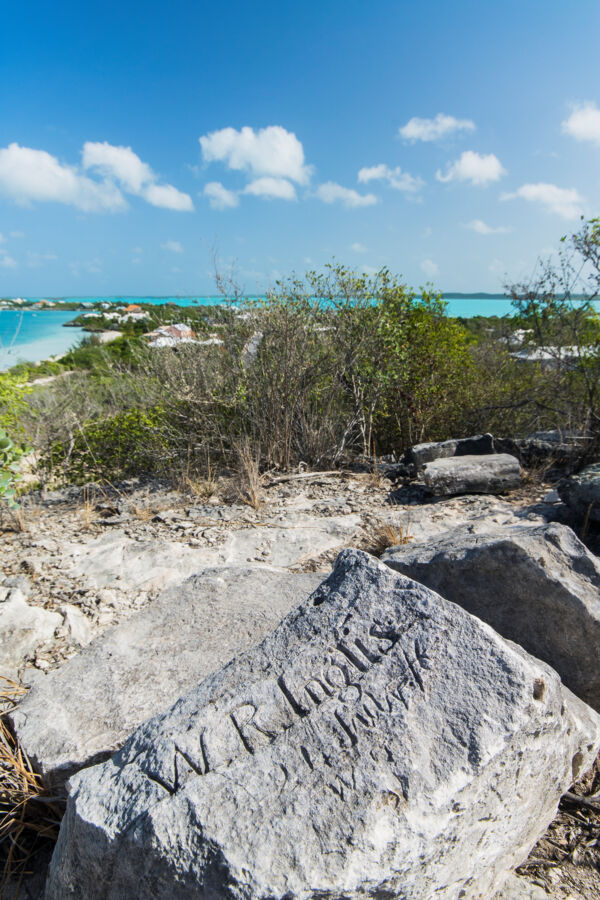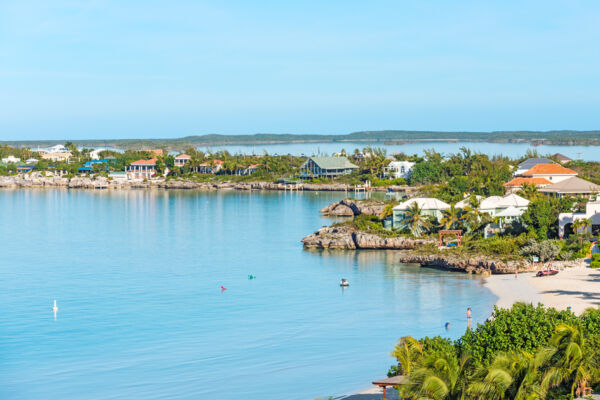Sapodilla Bay Hill Rock Carvings
Sapodilla Bay, Providenciales
Located on a small bluff on the south coast of Providenciales, the rock carvings at Sapodilla Hill represent bygone sentiments left by shipwrecked sailors and travelers as they waited for their ships.
The inscriptions found here include names, dates, symbols, and simple depictions of ships and buildings. The age of these carvings ranges from the mid-1700s to well into the 1800s.
Due to theft and vandalism, as well as some stones having been removed in 2010 during a preservation project, there’s little left to see.
The area is still worth a visit, though, as there are excellent views from the top of Sapodilla Hill.
If you aren't able to visit the carvings, replicas of some of the more impressive stones are on display near the international departures security area at the Providenciales International Airport (PLS).
See also Best Attractions in Turks and Caicos. If you're interested in visiting old rock carvings, you may also want to explore West Harbour Bluff.
The Sapodilla Bay Hill Rock Carvings are a protected historical site. Observe the following when visiting.
The Surrounding Sights

The elevations at Sapodilla Hill offer spectacular and fascinating scenery in all directions. You’ll get a birds-eye view of the brilliantly turquoise Chalk Sound Lagoon, the calm Sapodilla Bay Beach, beautiful villas and mansions, and South Dock, the primary cargo port in the Turks and Caicos.
The summit of Sapodilla Hill only reaches a little over 50 feet (15 m), yet the path is poor with loose and slippery rocks, so observe caution when climbing.
South Dock and the History of Providenciales
Unlike the eastern islands in the Turks and Caicos that got their start with the sea salt industry in the late 1600s, the relatively fertile Caicos Islands largely began to experience settlement with the arrival of the Loyalists at the end of the American War of Independence a century later.

The Loyalists typically pursued agriculture and planting in the American colonies. They attempted to do the same in the Turks and Caicos by raising sea island cotton, a variety of cotton introduced to this archipelago by the Taíno indigenous people.
The small and sheltered cove at South Dock, formerly known as Gussy Cove, was a natural site for a port and was used as such from the early days of settlement, when Cheshire Hall Plantation and the other plantations on Providenciales were in operation.
As Sapodilla Hill was at the site of what functioned as an active port, the inscriptions were largely created by the crews as they awaited new tasks or voyages. The rock inscriptions at West Harbour Bluff and elsewhere in the country, however, were often carved by shipwrecked sailors.
Government and insurance records made at the time for vessels from the United Kingdom, Europe, and America were often quite comprehensive—some of the vessel names featured in the inscriptions in the country match preserved documents, including several ships that were lost at sea.
